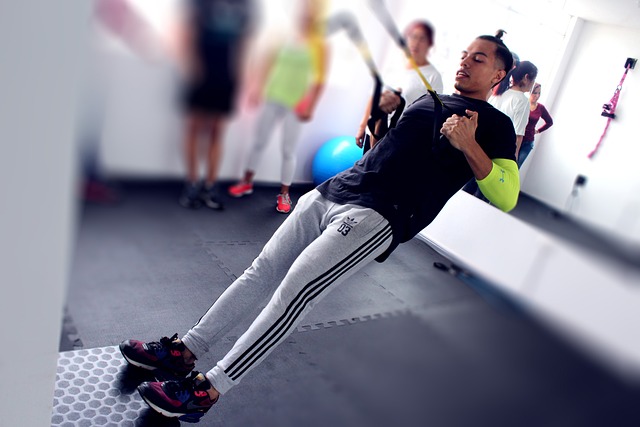- When it comes to adopting a healthier lifestyle, one of the best decisions you can make is to start a fitness routine. Regular exercise not only helps you shed those extra pounds but also boosts your energy levels, improves your mood, and enhances your overall well-being. If you’re new to the world of fitness, it’s perfectly normal to feel a bit overwhelmed. But fear not! This beginner’s guide will walk you through the essential steps to get started on your fitness journey.
Understanding the Why
Before we dive into the “how” of starting a fitness routine, let’s take a moment to understand the “why.” Why do you want to embark on this journey? Identifying your motivations can help you stay committed in the long run. Here are some common reasons people start a fitness routine:
1. Improved Health
- Starting a fitness routine can significantly improve your physical health. Regular exercise lowers the risk of chronic diseases like heart disease, diabetes, and hypertension.
2. Weight Management
- If weight loss or weight management is your goal, a fitness routine can help you shed those extra pounds and maintain a healthy weight.
3. Boosted Mood
- Exercise releases endorphins, the “feel-good” hormones, which can reduce stress and anxiety, and boost your mood.
4. Increased Energy
- You’ll notice an increase in your energy levels as you become more active. Say goodbye to those afternoon slumps!
Setting Realistic Goals
Now that you have your motivations sorted out, it’s time to set some realistic fitness goals. Setting achievable goals will help you stay focused and track your progress effectively.
1. Specific Goals
- Be specific about what you want to achieve. For example, rather than saying, “I want to get fit,” say, “I want to be able to run a 5k in three months.”
2. Measurable Goals
- Your goals should be measurable so that you can track your progress. If it’s weight loss, set a target weight or a target dress size.
3. Achievable Goals
- Make sure your goals are achievable within your current fitness level and lifestyle. Setting unrealistic goals can lead to frustration.
4. Time-Bound Goals
- Set a timeframe for achieving your goals. This adds a sense of urgency and keeps you on track.
Choosing the Right Workout Plan
With your goals in mind, it’s time to choose a workout plan that suits you. There are various types of fitness activities to explore:
1. Cardiovascular Exercises
- Cardio workouts like jogging, swimming, or cycling help improve your cardiovascular health and burn calories.
2. Strength Training
- Strength training involves lifting weights or using resistance bands. It helps build muscle and boost metabolism.
3. Flexibility and Balance Exercises
- Activities like yoga or Pilates enhance flexibility, balance, and overall body awareness.
Getting Started Safely
Safety should be your top priority as a beginner. Here are some safety tips to keep in mind:
1. Consult Your Doctor
- If you have any underlying health conditions or concerns, consult your healthcare provider before starting a fitness routine.
2. Start Slowly
- Don’t push yourself too hard at the beginning. Gradually increase the intensity and duration of your workouts.
3. Proper Form
- Focus on proper form and technique to avoid injuries. Consider working with a trainer, at least initially.
4. Stay Hydrated
- Drink plenty of water before, during, and after your workouts to stay hydrated.
Building a Routine
Consistency is key when it comes to a successful fitness journey. Here’s how to build a routine that works for you:
1. Set a Schedule
- Choose specific days and times for your workouts. Treat them like appointments you can’t miss.
2. Mix It Up
- Keep your routine interesting by mixing different types of exercises. This prevents boredom and plateaus.
3. Rest and Recovery
- Don’t forget to schedule rest days. Your body needs time to recover and repair.
Staying Motivated
Maintaining motivation can be a challenge, but it’s crucial for long-term success. Here are some strategies to help you stay motivated:
1. Track Your Progress
- Keep a workout journal to record your achievements. Seeing your progress can be incredibly motivating.
2. Find a Workout Buddy
- Working out with a friend can make exercise more enjoyable and create accountability.
3. Reward Yourself
- Treat yourself when you reach milestones. Rewards can be a powerful motivator.
Conclusion
Starting a fitness routine as a beginner is a significant step towards a healthier, happier life. Remember that progress may be slow at times, but with dedication and consistency, you will see results. Stay motivated, set realistic goals, and enjoy the journey towards a fitter you. Your body will thank you for it.
So, what are you waiting for? Lace up those sneakers, put on your workout gear, and take the first step towards a healthier, more active lifestyle. Your fitness journey begins now!
- When it comes to adopting a healthier lifestyle, one of the best decisions you can make is to start a fitness routine. Regular exercise not only helps you shed those extra pounds but also boosts your energy levels, improves your mood, and enhances your overall well-being. If you’re new to the world of fitness, it’s perfectly normal to feel a bit overwhelmed. But fear not! This beginner’s guide will walk you through the essential steps to get started on your fitness journey.
Visit the FItness page for more interesting blogs





